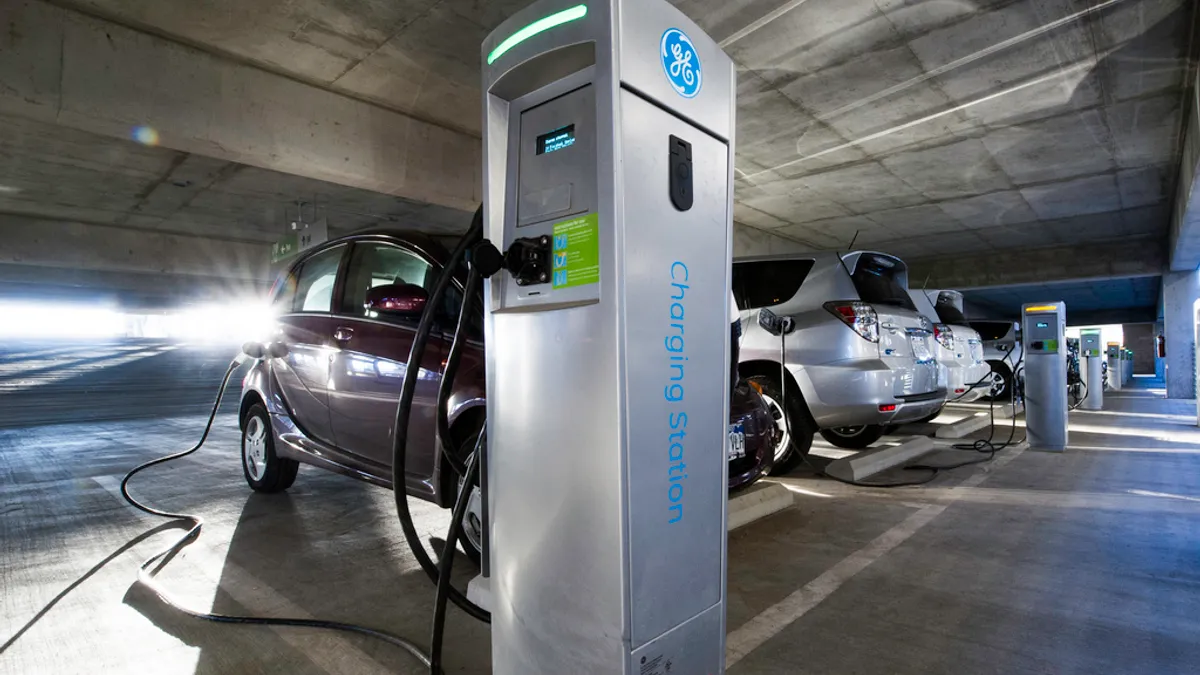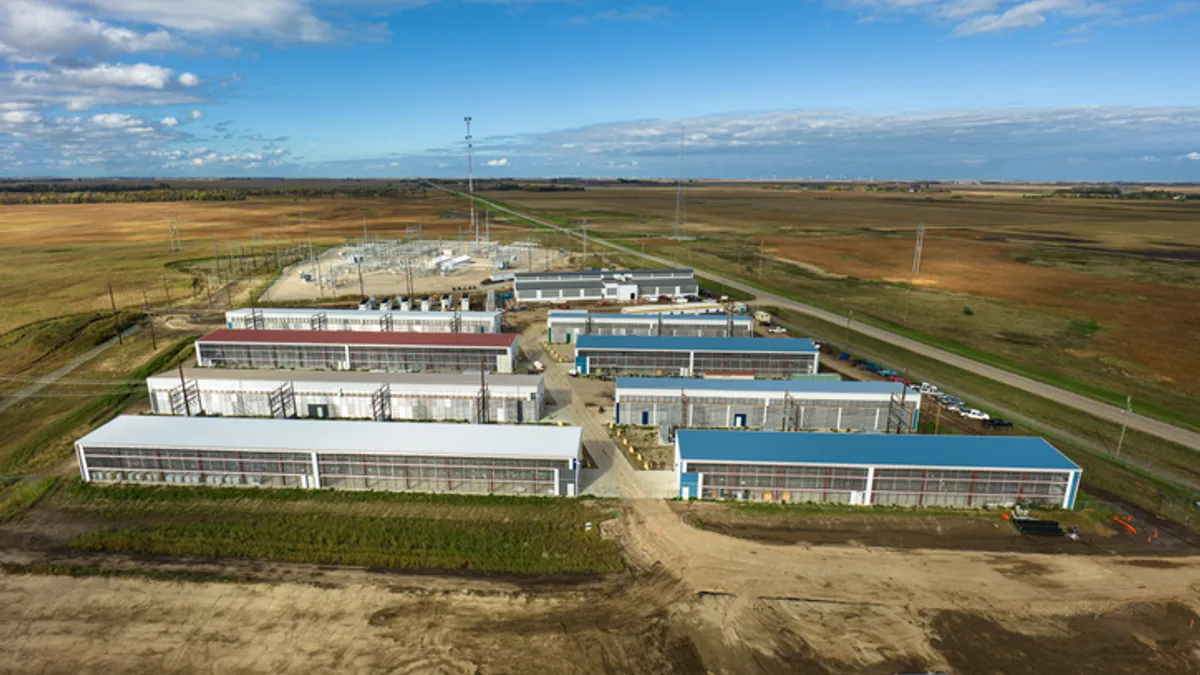Electric vehicles in the United States make up just a small fraction of cars on the roads, but that's something many people expect and want to change: electrifying the transport sector can provide environmental benefits while also bolstering electric utility revenues.
But to significantly raise the public's interest, several problems need to be solved. Range anxiety is a big one—how far can you drive before needing to "gas up?"
Addressing that existential question will require multiple solutions. One is in the car: longer-range vehicles sporting bigger batteries (preferably at a declining price). But the other has to do with charging in the public space — so far, there is no network of refueling stations at all akin to the gas stations that seems to exist on every corner of America.
Tesla, Nissan, Chevrolet and other manufacturers are intent on addressing the first question. But right now the majority of charging takes place at the home or in the workplace, according to an Idaho National Laboratory study on EV infrastructure. Developing more refueling stations, and in particular direct current fast charging (DCFC) locations, is a key to answering the second question.
An IHS study two years ago predicted about 10% of EV charging stations will be public by 2020, although they will lean heavily towards less-expensive and slower AC charging technology. A DCFC station, charging the battery directly, charges at about four times the rate but is more expensive to install.
All of this is a long lead-up to a fundamental question Rocky Mountain Institute recently tackled: what kinds of tariffs work for privately-owned charging stations? If you want to see more competitive electric vehicle charging ports, they've got to be able to make money.
"There's a nuance in the design of the rate that regulators need to be thinking about," said Chris Nelder, a manager with RMI’s electricity practice.
RMI recently released a new study, "EVgo Fleet and Tariff Analysis," analyzing charging sessions last year on all 230 of the infrastructure company's EVgo's 50 kW DC fast-charging stations in California. Researchers developed a matrix of eight types of charging sites and analyzed the effects of different tariffs across varying utility service territories.
If there is one simple takeaway, it is that demand charges — fees utilities impose on a load to address excess transmission capacity needed to serve its peak demand — do not work for DCFC stations.
"Public chargers should not feature demand charges," said Nelder. "There's no reason the utility can't recover the cost through that volumetric rate while still offering a DC fast charger a business case. ... What you want to do is have a situation where there is some margin to work with, which not the case."
RMI's analysis revealed demand charges can be responsible for over 90% of a charging station’s electricity costs, a function of a nascent industry, low utilization rates and high variability. In the most extreme examples during summer months, that's the equivalent of EVgo paying about $20 for a gallon of gas — before it sells it to the end customer.
Why demand charges don't work for EV charging
Even in California, which dominates the nation in electric vehicle adoption, EVs are still a small industry. That, in turn, makes for low utilization rates at charging stations. RMI published a sample load profile for a northern California DCFC station that illustrated the problem.
What you see are fairly large fluctuations in actual consumption, but steady peak demand. Energy sales vary up to 70% each month, but peak demand fluctuates only about 16%.
"This type of variation suggests a potentially unprofitable charging station," RMI concluded in its report. The commercial tariffs these charging units are on will "typically derive a significant portion of the bill from monthly demand charges (where the variation was small) while EVgo’s revenue would primarily derive from the number of charging sessions and kWh consumed (where the variation was large)."
San Diego Gas & Electric and Southern California Edison have each proposed EV-specific tariffs that de-emphasize demand charges, which Nelder said shows the utilities are aware of the problem. Currently, EVgo stations operate under tariffs designed for commercial facilities, which tend to have very different load profiles and are subject to high demand charges.
DC fast chargers are a "spiky, variable load," said Nelder. "If you demand that a load like that pay for 100% of the capacity investment needed to support that load, then basically all the rest of the loads on the system that are not spiky — like maybe a commercial building — they're going to be free-riding on the capacity paid for by the spiky customers."
Demand charges may be appropriate for a large customer, particularly if the facility is the only one like it in the area. An industrial customer drawing 1 MW, for instance. "But that's not the same context," said Nelder. "That's a lot of cost, and it does make sense to have a demand charge to account for that."
The goal is to provide access to EV fast charging at a gasoline-equivalent price, roughly $0.29kWh. That works out, assuming $3/gallon for gas, to about $0.09/mile. In the most extreme cases for EVgo, it was paying $1.96/kWh for energy used to charge vehicles.
New tariff proposals
All three of California's investor-owned utilities have developed Transportation Electrification Proposals, but Pacific Gas & Electric has yet to file new proposed tariffs specific to commercial EV stations. Those filed by SDG&E and SCE, however, look positive for DCFC stations, said Nelder.
Each of the utilities has taken steps to reduce the impact of demand charges. SCE has proposed new EV tariffs that will suspend monthly demand charges during a five-year introductory period, after which they will be phased in. SDG&E proposed a declining four-year discount on the monthly Grid Integration Charge for a commercial Grid Integration Rate (GIR) tariff that may apply to companies like EVgo.
Generally, RMI said the proposed tariffs, which use dynamic adder charges rather than demand charges, appear to "solve many of the problems inherent in the existing tariffs."
"These new tariffs better align the utility costs with charges paid by EVgo," researchers wrote, "and could produce a fairer outcome in which it is possible for DCFC operators like EVgo to obtain a flatter, more predictable cost structure."
RMI's analysis of the new rates show significant potential for viable charging business models. Under one Public Charging GIR rate, it could potentially have "nearly a 100% margin to work with," the report finds. But it will require smart charging to avoid critical peak prices that could skyrocket prices.
The extremes — 100% margins, $20 gas equivalents — are less likely. But Nelder said it will require smart rate design over the coming years to enable the EV market to develop.
"The question that remains is whether or not the new tariffs that the California IOUs have proposed can enable a profitable business for public DCFC charging companies, and whether there may be alternative approaches to rate design that would be more attractive," RMI said in the report. Allocating costs of EV infrastructure is also a sensible alternative, because California has set EV adoption as a societal goal.
But the answer is also unlikely to be simple. EVgo has a network of charging stations developed and acquired under a variety of conditions — some were acquired from NRG — which the company deployed years ago.
"The best solution isn't the same in all places," said Nelder. "We're arguing it's not just hard for station to be profitable … we're arguing its inappropriate to use demand charges for this kind of application. A single charger with a 50 kW draw is not a big industrial customer. It's not appropriate to the theory of demand charges."























